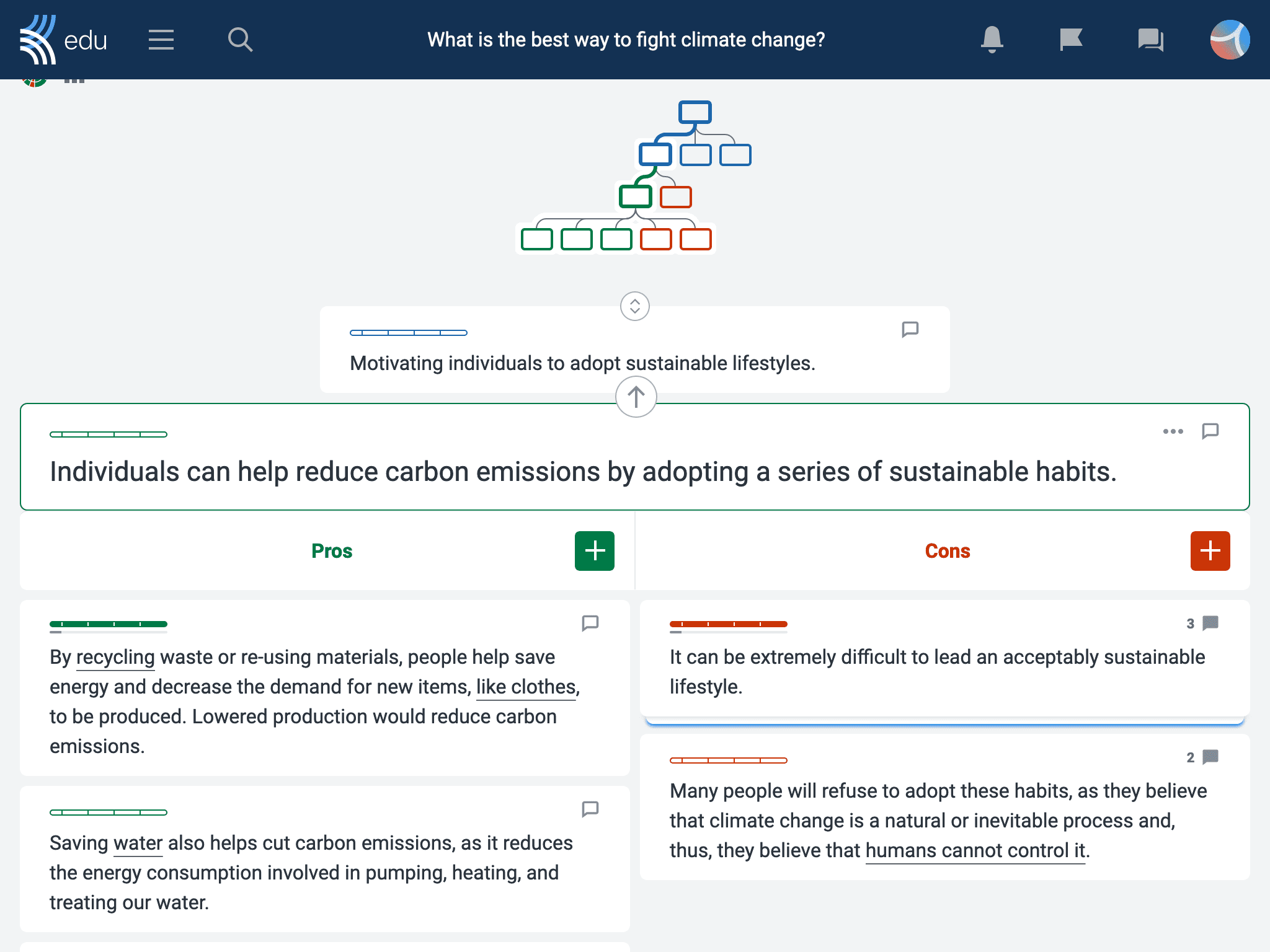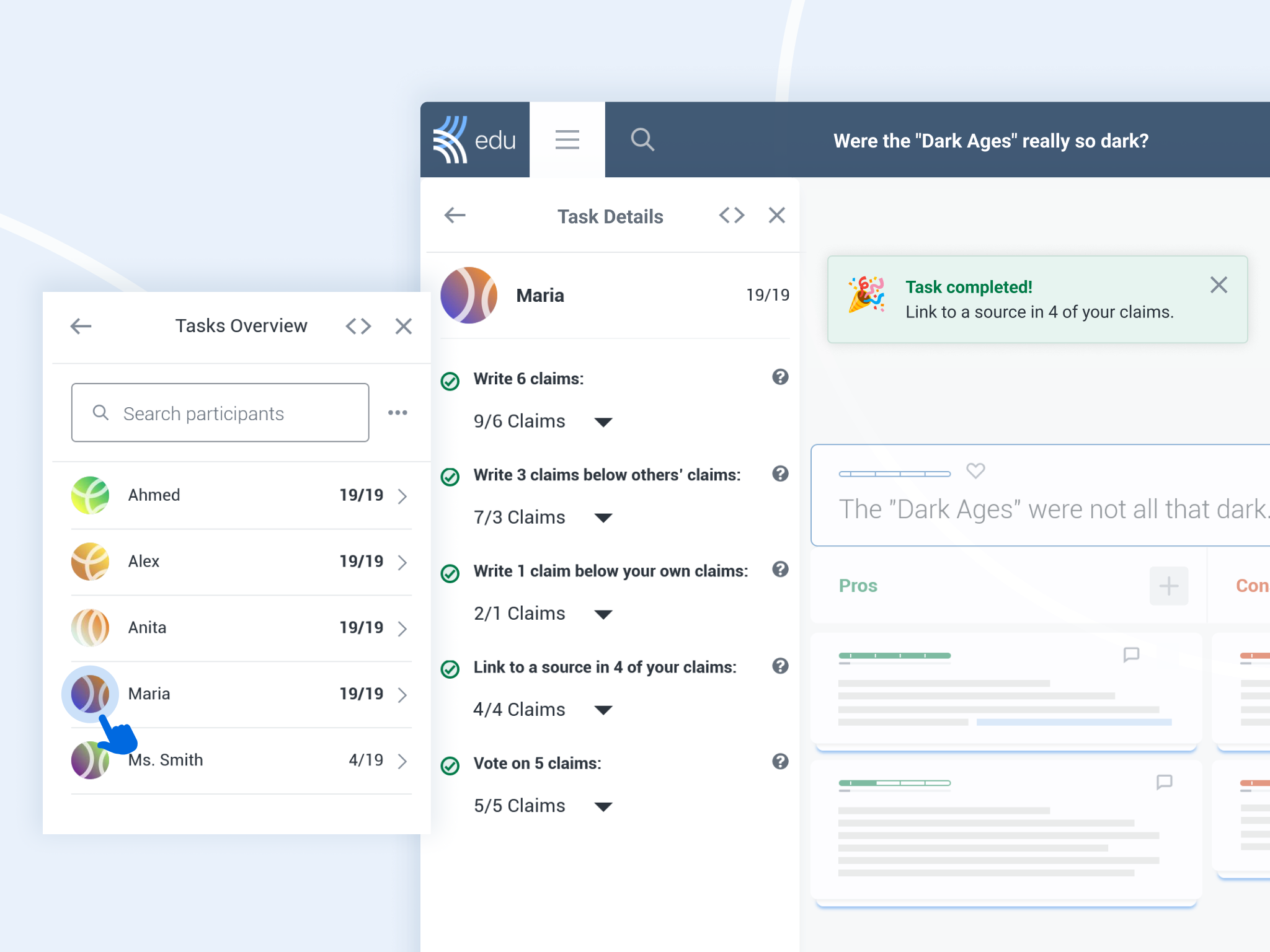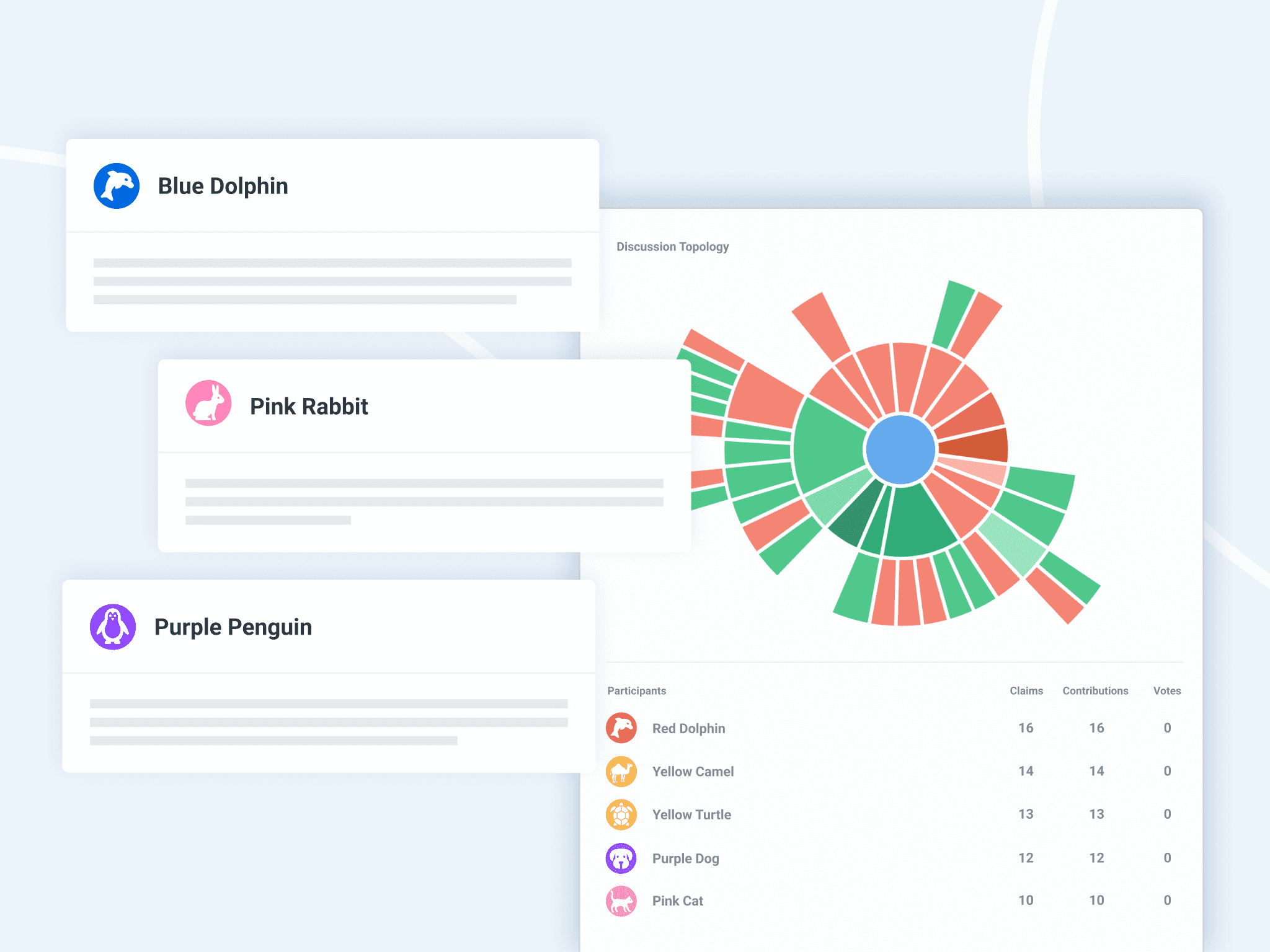Civil discourse has an increasingly important role to play in the classroom. Many students are skilled in short-form communication common on social media platforms. But employers report that it is becoming challenging to find graduates who are also strong in long-form communication. Thus, educators have a crucial role to play in developing these skills.
Rather than teaching pupils what to think, educators need to teach pupils how to think and communicate. Indeed, improving communication skills through civil discourse can increase employability, improve attainment, and better mental health. So, let’s get talking and see how you can use Kialo Edu to help students with their civil discourse skills!
What is civil discourse?
Civil discourse describes conversations designed to support mutual understanding. It’s a way for individuals to share their views in a safe and respectful manner, with the aim of determining a course of action or resolving a problem.
During civil discourse, participants offer thoughts and ideas in a logical way, ensuring contributions are supported by facts. They maintain an open mind, listen respectfully to others’ ideas, and reflect carefully on ideas in order to seek better understanding and greater agreement.
In doing so, they practice thinking critically and taking account of multiple perspectives. Then, they learn how to evaluate the evidence to draw a conclusion. These skills are an essential part of effective long-form communication. And this requires much more thoughtful consideration than merely hitting the “Like” button!
Strategies for teaching civil discourse in the classroom

Students are never too young to learn about civil discourse. Starting early means students can hone the communication skills that future employers are looking for. It’s also great for interpersonal communication in general! Here are some tips to get started with students of any age and in any curriculum subject.
1. Establish ground rules before the start of a discussion
In civil discourse, everyone has the right to be heard. Establishing a set of ground rules before discussions ensures all students feel confident in making contributions. The most effective way to do this is through collaboration with students.
By doing so, students have ownership, which makes them more likely to respect the rules during discussions. For successful civil discourse, it is important that students listen to each other’s opinions, use “I” messages to communicate, and avoid inflammatory language.
2. Begin civil discourse with debate topics students are familiar with
In order to participate in civil discourse, students need to have something to discuss! To begin with, this should be on a topic they are familiar with. This gives them the confidence to make and reflect on claims, without the need for significant amounts of research.
Instead, students’ efforts can be focused on developing key skills such as logical reasoning and evaluation. Fun, engaging discussions in Kialo Edu’s icebreaker category are a great choice for getting students started with civil discourse.
Or, why not try one of our other ready-made Topic Templates? They are full of engaging topics that are sure to grab students’ attention, making it more likely for them to offer up their opinions.
Topics like “Should schools start later in the day?” or “Should students have to wear school uniforms?” offer an excellent opportunity for students to exchange their viewpoints on the things that matter to them in a safe and monitored environment.
3. Offer some prompts or starter arguments for students to scaffold developing their line of reasoning
To support students in developing clear lines of argumentation, educators can customize a discussion by providing students with solid “starter arguments” in the form of top-level claims. You could even ask students to collaborate on these before the discussion begins.
Top-level claims act as starting points, setting up students to create a logical series of pros and cons for each argument. This will allow students to understand that there may be many different perspectives within a discussion and will provide plenty of material when reaching a conclusion.
How to practice civil discourse with students on Kialo Edu

Looking to start a conversation with students in the classroom? With Kialo Edu, you can ensure that civil discourse in your classroom becomes the norm!
1. Students have the ability to visually develop logical arguments
Presenting a logical argument is a key part of successful civil discourse. The argument tree in every Kialo Edu discussion encourages students to take a logical approach to developing their arguments.

After starting with top-level claims, students can reflect on each one before adding further pros and cons for respective support and rebuttal. This argument mapping structure can be particularly helpful in teaching the concept of civil discourse to those pupils who are visual learners.
2. Students have a space to represent and explore different points of view
As part of a Kialo discussion, educators can task students to write claims on a thesis. Claims are written as pros, which support the thesis, and cons, which oppose it. Challenging students to write both pros and cons ensures that they become familiar with reasoning about different points of view, a key concept of civil discourse.

3. Students can collaboratively work together to discuss in groups
You can group students into teams on Kialo Edu to facilitate civil discourse. By discussing in groups, students must become accustomed to having their points of view challenged by others.
To begin with, this is easier if students work in smaller teams with familiar people. As students become more skilled in civil discourse, they can work in larger teams, reflecting on an even wider range of opinions.
4. Students can contribute their true opinions anonymously in a discussion
Students must feel comfortable enough to offer their true opinions in civil discourse. However, this may be challenging for students, as others may influence their views or they may feel uncomfortable confronting someone else’s point of view.
The Anonymous Discussion feature on Kialo Edu addresses this by allocating a username at random, so all contributions are completely anonymous (except to the teacher). Students can make honest contributions to discussions and can see how others respond respectfully. This can increase students’ confidence until they are eventually proud to contribute under their real identity.

To get started with civil discourse in your classroom, simply select one of our ready-made templates on a subject that your students are passionate about and start the discussion. Alternatively, find out about the issues that matter to them and create your own discussion from scratch.
We look forward to engaging in civil discourse with you about the ways you’ve used Kialo Edu in your classroom! You can contact us directly at feedback@kialo-edu.com or on social media. With the greatest respect, we thank you for creating a space for this discourse to happen in your classroom!

